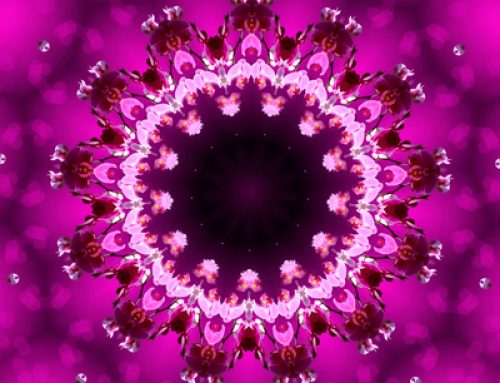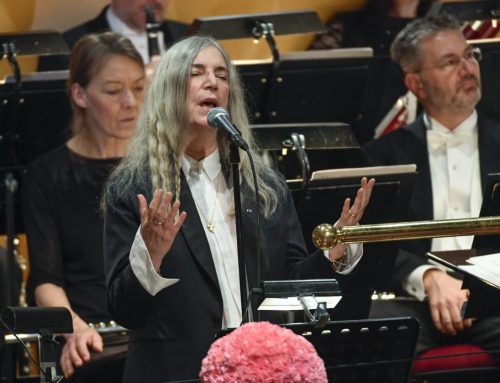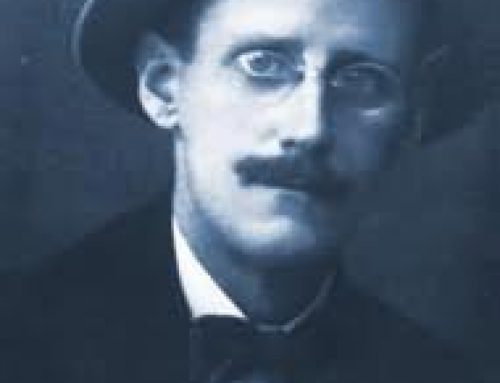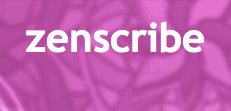Episode 1
Joyce’s schema for episode 1:
Homeric link/Lien avec Homer: Telemachus/Télémaque
Time/Heure: 8 a.m.
Place/Lieu: Martello Tower
Color: white, gold/blanc, or
Body part/partie du corps: none/aucun
Art: Theology
Symbol: Heir/héritier
When Ulysses begins, it is 8 a.m. on the morning of Thursday, June 16, 1904, in Dublin. The first episode is a dawn or a birth, as we are introduced to Stephen Dedalus, who was the hero of Joyce’s first novel, A Portrait of the Artist as a Young Man. Stephen is now 22 years old, and about a year has passed since the end of Portrait, when Stephen set off from Dublin for Paris, proclaiming, “Welcome O life! I go to encounter for the millionth time the reality of experience.” Since then, he has indeed confronted “real” life: student bohemian life in Paris, interrupted by the death of his mother, and now a job as a teacher in a boys’ school.
The style of the writing in this episode reflects Stephen’s personality – “an earnest, narcissistic, young aesthete,” in Stuart Gilbert’s words.
The first three episodes serve as a bridge between Portrait and Ulysses.
In these episodes, we are also introduced to Stephen’s quest, his “leaving home” in search of his “true (metaphorical) father,” or his true self. He seeks to become whole. He is estranged from his biological father, the extrovert man-about-town Simon Dedalus, having “mislaid him in a pub.”
These episodes have no corresponding body part because they are devoted to Stephen, who exists more completely in and represents the spiritual world. He does not yet have a “body,” that is, he is not yet “whole.”
The symbol that Joyce assigned to this first episode is “heir,” for Stephen and this episode are, like an heir, links between past and future; also, Stephen is the “heir” of an as yet unknown “father,” heir, like each of us, to his own true self.
Theology is the art of the spirit, Stephen’s domain.
White and gold are morning colors.
The book opens in the Martello Tower on the Dublin coast, where Stephen is living with Buck Mulligan, an Irish medical student who mocks and bullies him. Mulligan’s friend, Haines, a wealthy Oxford Englishman in search of quaint Irish folklore, has been staying there as well. But Stephen, despite his poverty (he is wearing Mulligan’s hand-me-down clothes), pays the rent, and Mulligan asks him for the key and for money. Here is a first triad/trinity: father (Haines, colonizer, master), son (Mulligan, colonized, servant) and holy ghost (Stephen, refusing both “extremes,” and not fully “embodied”).
Remember that Ireland in 1904 was not yet liberated from English imperialism and was (and remains) fiercely Roman Catholic.
The episode begins with a ritual, a sort of Black Mass, performed mockingly by Mulligan with « a bowl of lather on which a mirror and a razor lay crossed. »
The narrative is mostly straightforward until a first glint of Stephen’s interior monologue: “Chrysostomos,” which is Greek for “golden mouth,” arising in association with the gold-toothed, false Mulligan. (There was a St. John Chrysostomos, a father of the church; Mulligan is modeled on Oliver St. John Gogarty, with whom Joyce lived briefly in the Martello Tower in the summer of 1904.)
The old milk woman represents Ireland – conquered, oppressed, exploited by both Mulligan (the betrayer of his people, or of the true self) and Haines (the colonizer, the grasping self). She also represents the lost and suffering deluded self. Stephen rejects both Mulligan and Haines, and is upset that the old woman sees only them – her oppressors. He is not “seen,” for he is not yet fully « embodied. »
Stephen is still mourning his mother, amid traces of guilt: He refused her request to kneel and pray as she lay dying. He refuses to serve his two “masters,’’ the Catholic church (spiritual power) or the British empire (material power). He refuses to serve Mulligan and Haines. He refuses both body and soul, form and nonform. So what can he do? Where is his true self? The episode ends with Stephen’s thought about Mulligan, “Usurper.”
Each group of three episodes also forms a triad. This first episode is concerned primarily with space (form): the tower, “stately, plump” Buck Mulligan, the “snotgreen sea,” the sunlight, clouds, the breakfast (three eggs, individual yellow yolks in a common mass of white that Mulligan hacks apart), the “dogsbody” (which is also god’s body), the second-hand clothing, the key, etc. The next episode will, accordingly, focus mostly on time (nonform).
— Amy Hollowell Sensei











i look down the garden and think of jobs and i realise this is what is keeping me from the experience of the oneness and i am a USURPER
…………………….
later……… i’ve lost it -does this mean i can’t work in the garden?
no, no idiot (dogsbody?).
once on sesshin i was doing kinhin – just part of what was happening, when i suddenly thought "when am i going to get time for a cigarette?" then, at that moment, was when i realised that i had broken the being part of what was happening – (i hadn’t realised it until it was gone!!)
me/i had appeared, and THIS is the usurper
"Stephen bent forward and peered at the mirror held out to him, cleft by a crooked crack……." page 5, line 30
"It is a symbol of Irish art. The cracked looking glass of a servant" page 6, line 10
space – ireland, seen through the cracked looking glass (religion, collecting stuff, i/me)
is this why stephen cannot go home any more?